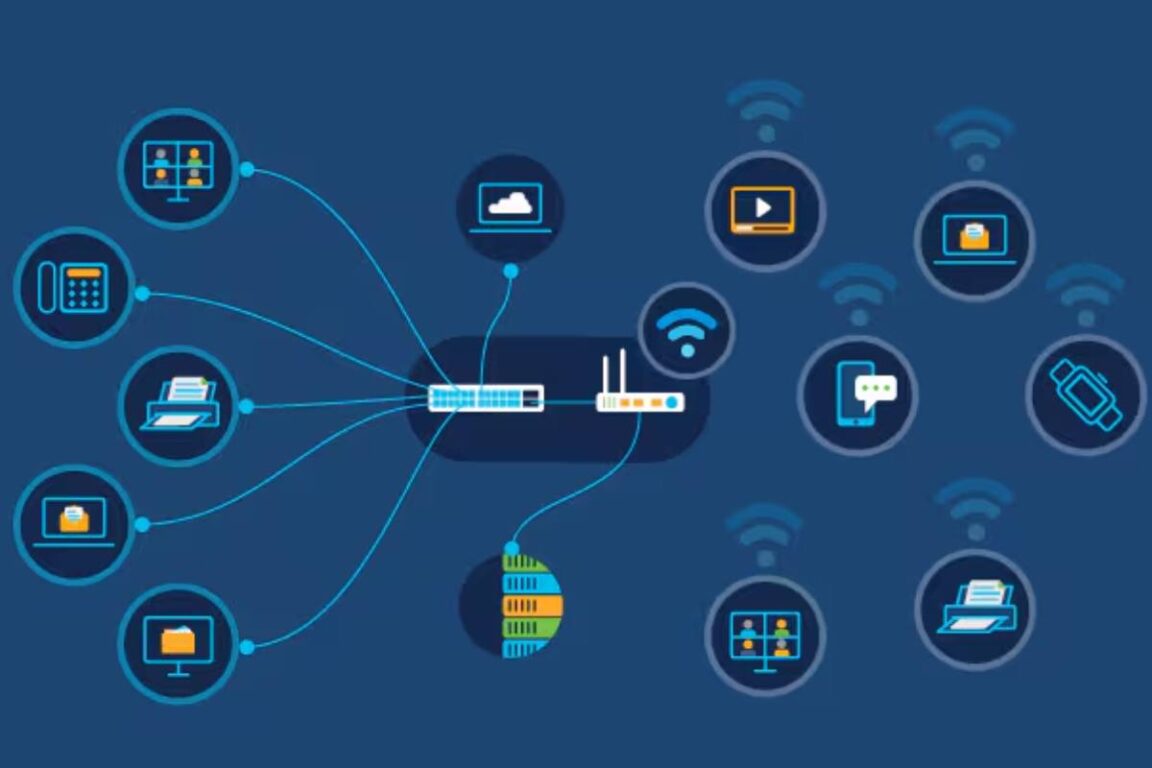Information technology uses computers, storage, networking, and other physical devices, substructure, and procedures to create, process, store, secure, and exchange all formulas of electronic data. It plays a vital role in today’s personal, commercial, and not-for-profit uses.
Some of the Common Information Technology Applications include:
Computers: IT professionals use computers to create, process, and store data. They also use computers to communicate with others and to access information from the internet.
Software: IT professionals use software to automate tasks, to analyze data, and to create new applications.
Networking: IT professionals use networking to connect computers and other devices together so that they can share data and resources.
Data storage: IT professionals use data storage devices to store large amounts of data. This data can be stored on physical media, such as hard drives, or in the cloud.
Security: IT professionals use security measures to protect data from unauthorized access. These measures can include firewalls, antivirus software, and intrusion detection systems.
Information Technology is a broad field that includes a wide range of disciplines. Some of the standard IT careers include:
Computer engineer: Computer engineers design, develop, and test computer hardware and software.
Information security analyst: Information security analysts protect computer systems and networks from unauthorized access.
Network administrator: Network administrators install, configure, and maintain computer networks.
Web developer: Web developers design, develop, and maintain websites.
Database administrator: Database administrators design, develop, and manage databases.
IT is a constantly evolving field. New technologies are emerging all the time, and IT professionals need to be able to adapt to these changes. IT is also a highly competitive field, and IT professionals need to have solid skills and knowledge in order to be successful.
Types of Information Technology
There are many different types of information technology (IT), but some of the most common include:
- Hardware: This includes the physical components of computers and other electronic devices, such as processors, memory, storage devices, and input/output devices.
- Software: This includes the programs that run on computers and other electronic devices. The software can be used for a variety of tasks, such as word process, web browsing, and playing games.
- Networking: This includes the connections between computers and other electronic devices. Networks allow computers to share data and resources, such as printers and files.
- Data storage: This includes the physical devices and systems that are used to store data. Data storage can be either on-premises or in the cloud.
- Security: This includes the measures that are used to protect data from unlawful access, use, or disclosure. Security measures can include firewalls, antivirus software, and intrusion detection systems.
- Analytics: This includes the process of collecting, cleaning, and analyzing data to extract visions and make better decisions. Analytics can be used in a variety of industries, such as marketing, finance, and healthcare.
- Artificial intelligence: This includes the development of intelligent agents that can reason, learn, and act autonomously. Artificial intelligence is being used in a variety of applications, such as self-driving cars, fraud detection, and customer service chatbots.
- The Internet of Things: This refers to the network of physical objects that are deep-rooted with sensors, software, and network connectivity that permits them to collect and exchange data. The Internet of Things is being used in a diversity of applications, such as smart homes, industrial automation, and healthcare monitoring.
Importance of Information Technology
Improved Efficiency and Productivity
IT can help businesses to automate tasks, which can free up employees to focus on more strategic work. IT can also help businesses to streamline processes, which can lead to turnaround times faster and improved customer service.
Increased Reach and Market Share
IT can help businesses to influence new customers and markets. For example, businesses can use online marketing and social media to reach a global audience. IT can also help businesses to sell their products and services online, which can expand their reach even further.
Enhanced Decision-Making
IT can help businesses to collect and analyze data to make better decisions. For example, businesses can also use data analytics to track customer behavior, identify trends, and predict future demand. This information can then be used to make more informed decisions about pricing, marketing, and product development.
Increased Security
IT can help businesses to protect their data and systems from cyberattacks. For example, businesses can use firewalls, antivirus software, and intrusion detection systems to prevent illegal access to their systems. They can also use encryption to protect sensitive data.
Innovation
IT can help productions to innovate and stay forward of the competition. For example, businesses can use IT to develop new products and services, improve existing products and services, and streamline processes. IT can also help businesses to experiment with new ideas and test new concepts.
Overall, IT is a critical tool for businesses of all sizes. It can help businesses to progress their efficiency and productivity, reach new customers and markets, make better decisions, increase security, and innovate. As technology continues to grow, IT will become even more critical for businesses.
Conclusion
Information technology (IT) is a rapidly evolving field that has a profound impact on our lives. It has changed the way we work, communicate, and learn. It has also created new opportunities for businesses and individuals.
As IT continues to develop, it is essential to stay up-to-date on the latest trends. This will help us to make informed decisions about how to use IT to our advantage. It is also essential to be aware of the potential risks associated with IT, such as security threats and privacy concerns. By understanding the hazards, we can take steps to moderate them.
Overall, IT is an authoritative tool that can be used for good or bad. It is up to us to use it responsibly and ethically. By doing so, we can ensure that IT continues to be a force for good in the world.


